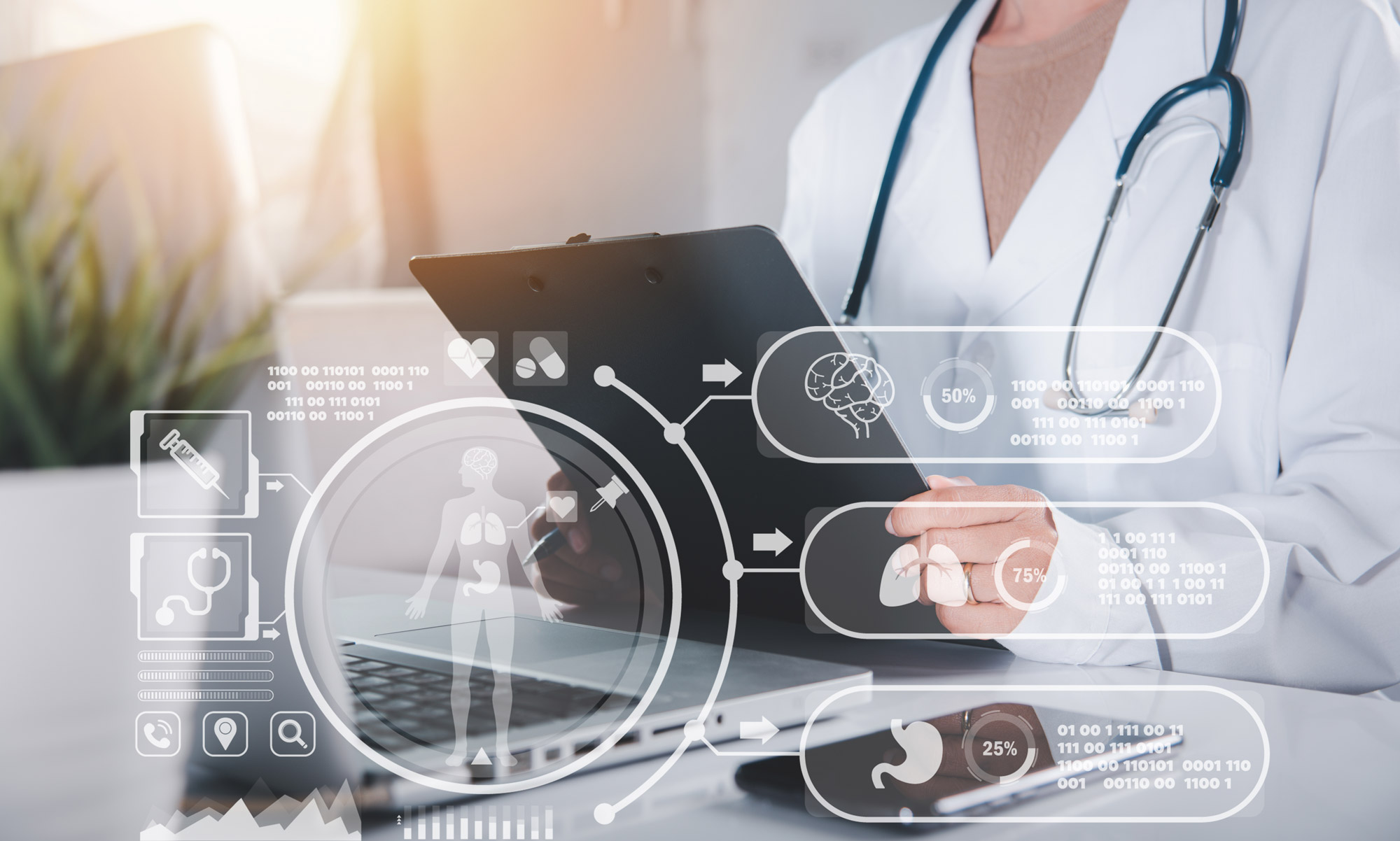Feature
Remote patient monitoring: 2024 trends and top industry players
Remote patient monitoring (RPM) is transforming the way patients and clinicians interact and exchange information, and the sector is developing rapidly. We highlight the trends and key industry players to watch in 2024. By Sally Turner.

Credit: Sorapop/Getty Images
Telehealth, telemedicine, and remote patient monitoring (RPM) have seen a surge in growth, driven by the demand for efficient and convenient medical services and the rising incidence of chronic diseases. The aging population worldwide is also a significant factor, with RPM devices helping to maintain the independence and wellbeing of the elderly population.
According to 2023 market projections, the RPM sector will be worth $4.07 billion by 2030, growing at a 8.74% CAGR. The prevalence of diabetes, cardiovascular disease, and respiratory disease, which need ongoing monitoring and management, is a key factor driving the market.
Remote patient monitoring involves many different technologies including wearable devices and Bluetooth and artificial intelligence integration. These devices can track and monitor a patient’s health remotely, outside of a typical clinical setting, and then send the data electronically to a clinician for analysis and advice.
RPM Companies to watch in 2024
Companies at the forefront of RPM innovation are changing the face of medicine, and 2024 looks to be an exciting year.
Wearable devices play a crucial role in RPM by enabling continuous monitoring of vital signs, physical activity, and other health metrics. From fitness trackers to smartwatches, these devices provide individuals with more control over their health while giving medical practitioners valuable data about their status. One of the important features that devices rely on is Bluetooth, so they can achieve connectivity.
Key players include Medtronic, Accuhealth and Boston Scientific
says Elia Garcia, a GlobalData analyst
Medtronic offers a comprehensive RPM platform called CareLink which helps physicians, patients and carers manage health metrics and medical adherence. It has proved particularly useful in the management of diabetes. Real-time data is sent to CareLink via various devices and monitors, and patients can connect with their care team.
Accuhealth is leading on smart Bluetooth devices including blood pressure monitors, a glucose sensor, oximeter, sleep and resting heart monitor, and more. The company also offers a range of remote patient monetary vendor tools and focuses on international outreach with many of its digital technologies available in multiple languages.
Boston Scientific’s LATITUDE is a popular home monitoring system that provides doctors with access to healthcare data from certain cardiac implants such as pacemakers and defibrillators. The technology can detect the tiniest of changes in cardiac function and immediately warn the patient and clinician of impending heart failure
“Major players in the wearable technology market, such as Sony, Apple, Samsung Electronics, Xiaomi, Huawei, Garmin, among others, are also expected to drive growth in the global wearable tech market,” predicts Garcia. “Their proficiency in developing innovative wearable technology together with the incorporation of AI capabilities puts them in a strong position to take advantage of the growth in the RPM market.”
Artificial intelligence (AI)
It is anticipated that companies focusing on AI and wearables are likely to dominate the RPM industry in future years. Medical device companies are heavily investing in AI, including Philips which is leading with the highest number of AI deals, observes Garcia. In 2023, Philips and Masimo collaborated to integrate Masimo's W1 health tracking watch with Philips' monitoring system.
“AI can support customised treatment plans, predictive analytics, and pattern identification by processing a large amount of data,” adds Garcia. “It is expected that the future of the diagnostic imaging market will be impacted by AI, for example Google and GE Healthcare have been focusing on cancer detection.”
GE Healthcare has a portfolio of robust imaging technology to scan brain, spine, vascular and peripheral nerve anatomy, with dedicated post-processing tools for cancer management. In 2023, the company also announced the launch of MyBreastAI – an innovative AI suite designed to radically improve radiologists’ workflow, helping them to read mammograms and detect breast cancer in patients earlier.
Google Cloud's healthcare-specific generative AI, known as MedLM, has garnered international interest with China Medical University Hospital (CMUH) leveraging the technology to support its doctors in providing cancer care. In December of 2023, CMUH announced a formal partnership with Google Cloud to use MedLM (based on the large language model, Med-PaLM 2).
Industry challenges
Despite the positive outlook there are key concerns that need addressing for the RPM sector to thrive.
Privacy concerns and data security have come under scrutiny. According to a GlobalData survey, respondents expressed privacy concerns about remote patient monitoring devices. Questions surrounding patient consent, data ownership, and the responsible use of technology must be addressed to ensure that remote monitoring respects patients' rights and autonomy. Empowering patients with control over their health data and involving them in decision-making processes are integral aspects of ethical remote monitoring practices.
“Hospitals will also need to make sure that their networks have strong cybersecurity safeguards and open guidelines for sharing and storing data as the use of these devices grows,” says Garcia. “If patients are worried about the security and privacy of their personal health information, they might be reluctant to use these devices.”
Ensuring the secure transfer of patient data from devices to healthcare providers is crucial for patient care, as healthcare data is extremely sensitive. Strong cybersecurity methods and technologies are required to guard patient data from breaches and unwanted access. Healthcare providers will need to invest significantly in encryption, secure authentication, and compliance with regulatory standards to address these concerns.
Legislation and the regulatory landscape
It is crucial that healthcare providers choose remote patient monitoring solutions that are compliant with data security standards, and that they perform ongoing risk management practices.
“For example, standards in line with the HIPAA (Health Insurance Portability and Accountability Act) in the United States and the General Data Protection Regulation (GDPR) in the European Union,” explains Garcia. “These standards help ensure the privacy and security of patient data. In Canada, healthcare providers must comply with PIPEDA, which governs the collection, use, and disclosure of personal information. PIPEDA requires healthcare providers to obtain patient consent, protect personal information with appropriate safeguards, and provide individuals with access to their own information.”
The regulatory landscape for RPM is evolving to keep pace with technological advancements and regulatory agencies are actively working to streamline approval processes for innovative devices.
Outlook: 2024 and beyond
Businesses in the medtech sector are more likely to stay ahead of the curve in terms of wearables and AI development if they commit a sizable portion of their resources to research and development.
“Especially in fields like ultrasound imaging, pharmaceutical diagnostics, and robotics,” says Garcia.”
Another key factor is the regulatory landscape. Businesses that successfully manage legal requirements and abide by regulations set forth by regulatory bodies (like the FDA and the EU) will be in a better position to pursue wearables and AI development and innovation.
According to GlobalData, the medtech industry is experiencing a surge in demand for wearables and artificial intelligence in personalised medicine, and improved patient care. Businesses that are able to recognise and satisfy these consumer needs or market demand are more likely to innovate in this sector.
Advancements in remote monitoring will continue to reshape the healthcare industry, providing real-time insights, improving patient outcomes, and facilitating more efficient healthcare delivery.

Caption: The US Pentagon is seeking to reduce carbon emissions through a range of programmes, but will it go far enough? Credit: US DoD
Total annual production

$345m: Lynas Rare Earth's planned investment into Mount Weld.

Caption. Credit:

Phillip Day. Credit: Scotgold Resources